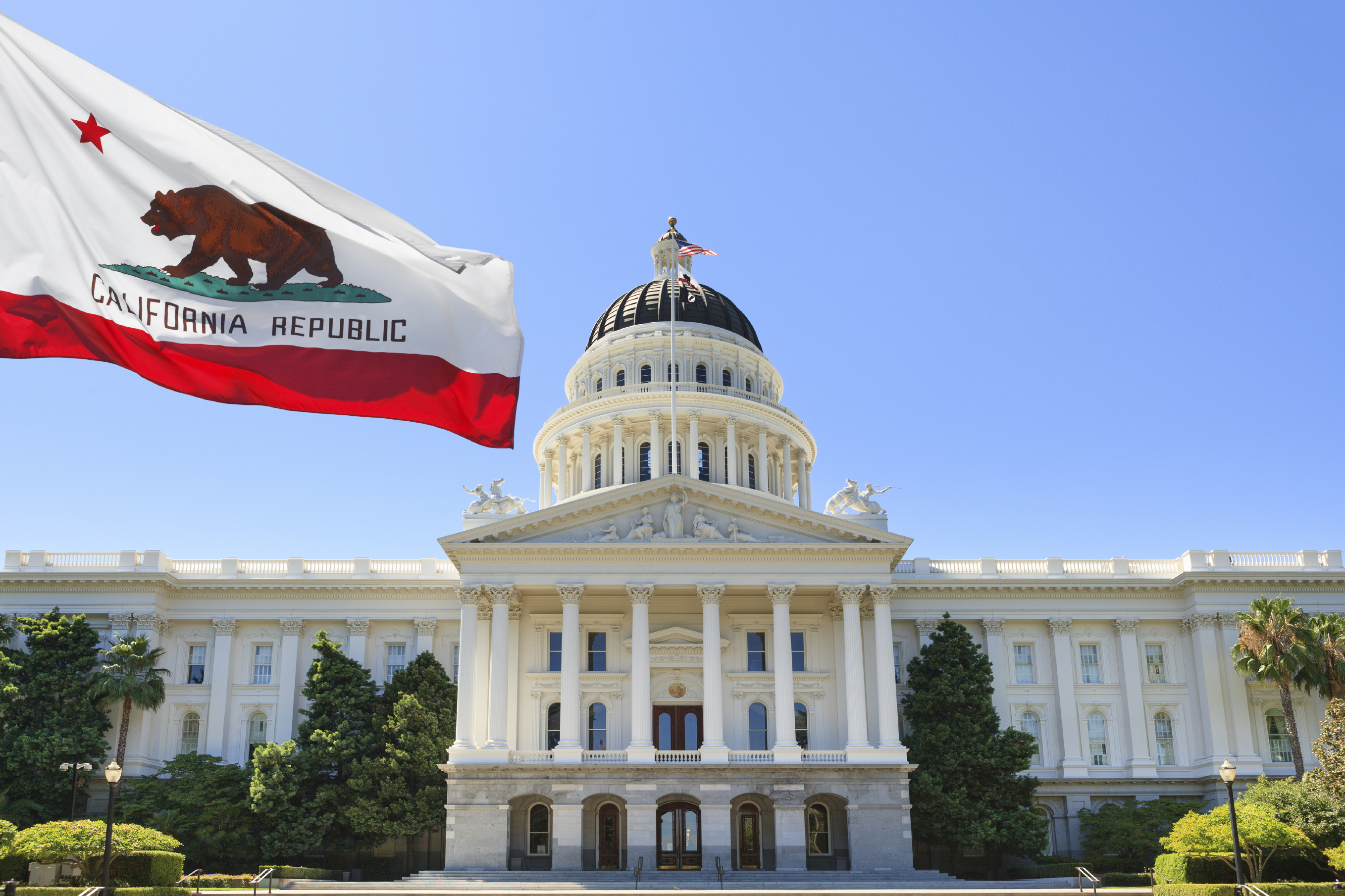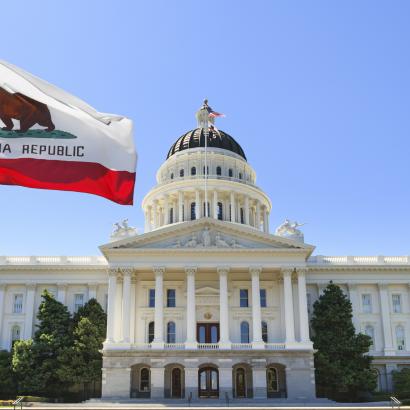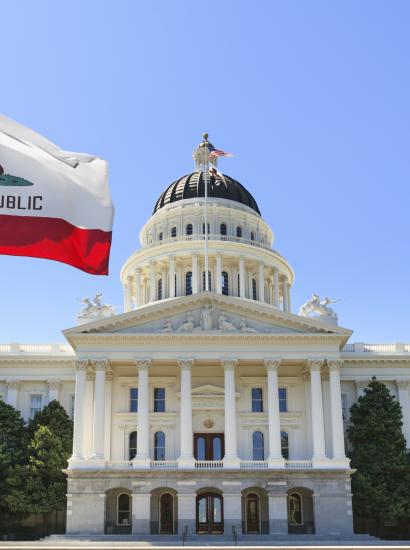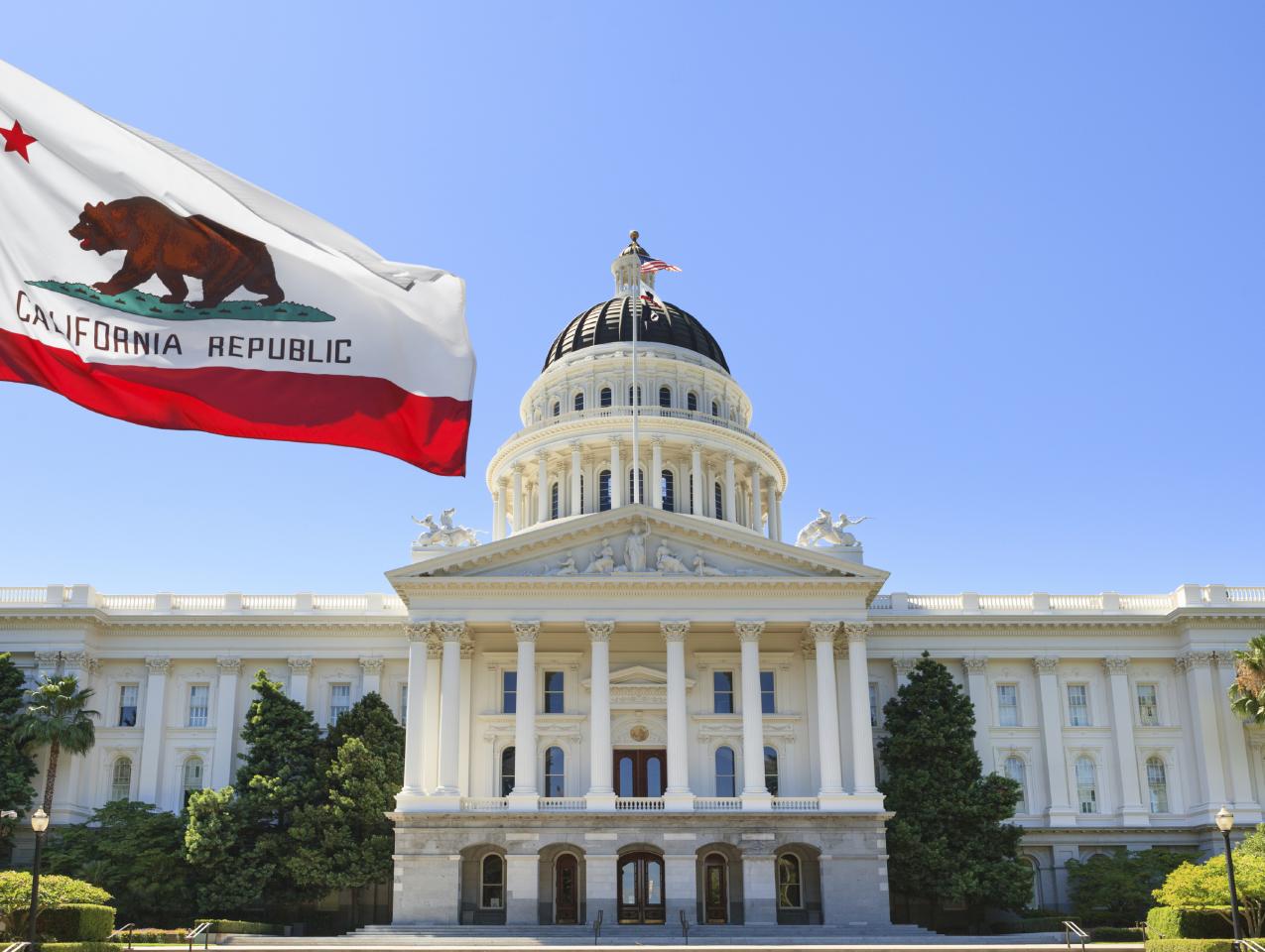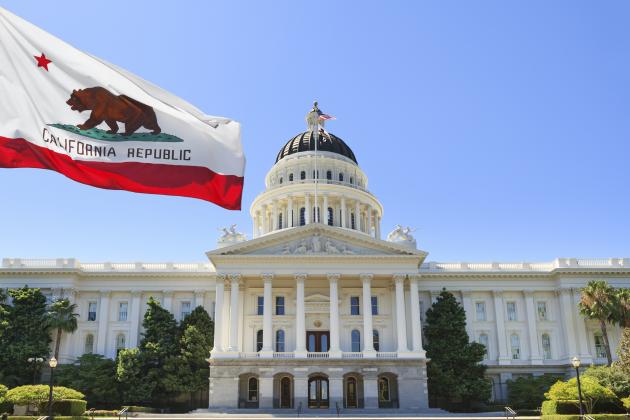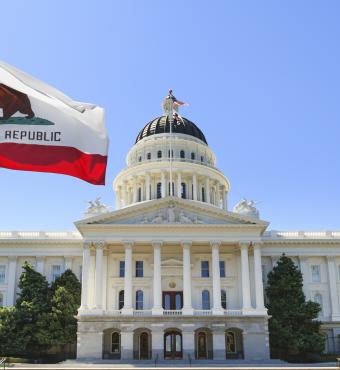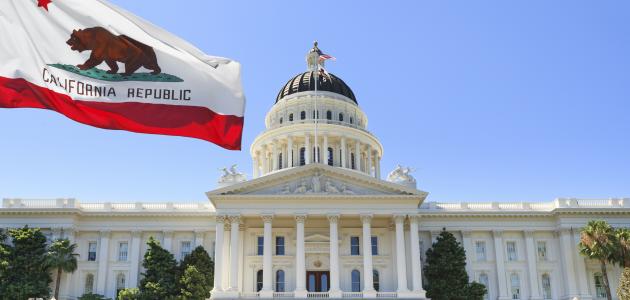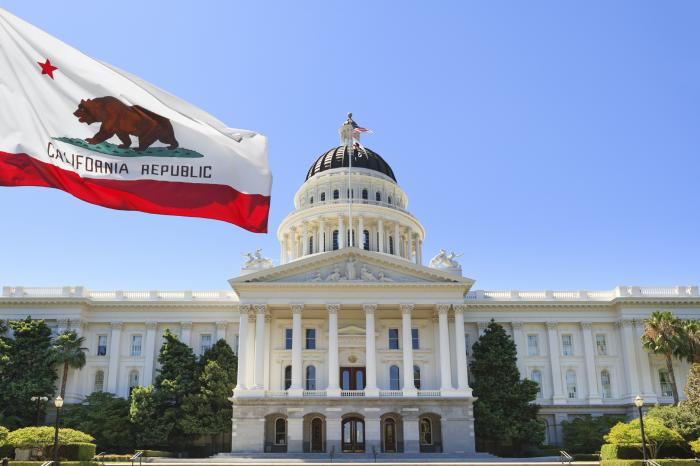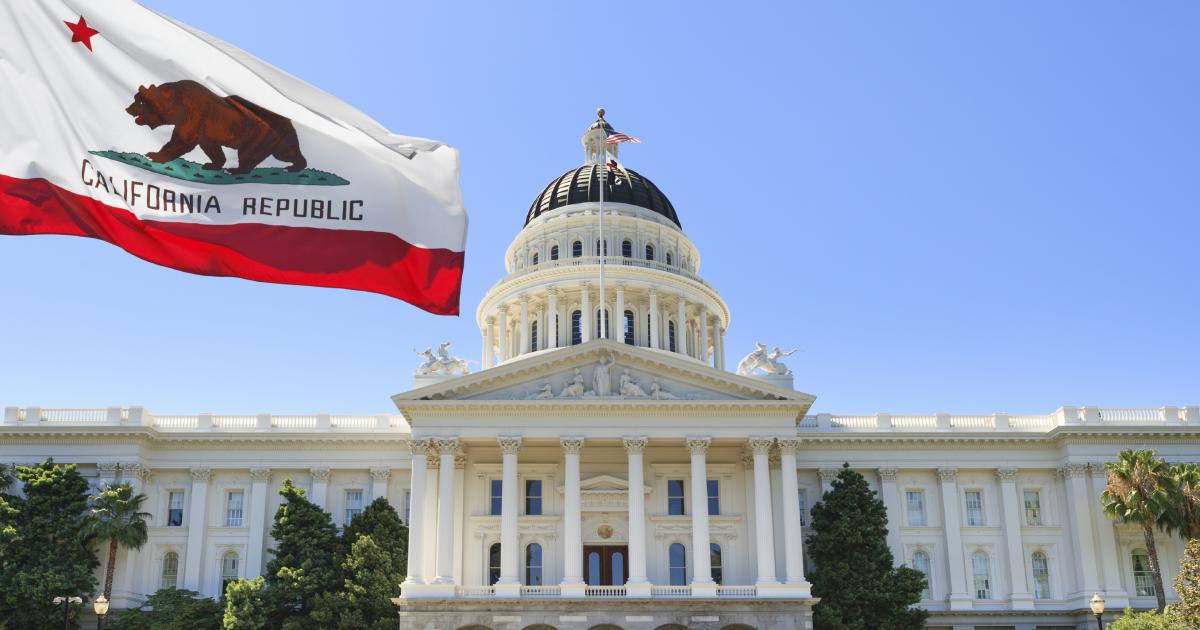- Politics, Institutions, and Public Opinion
- State & Local
- California
Is it possible to be both oversized and undersized at the same time? California’s role in presidential elections proves that, yes, it is.
On the oversized size, let’s start with money and electoral votes.
As you’ll see in this chart, the Golden State dwarves Texas and New York in dollars forked over to candidates. Trust me: during 2019, Californians will grow sick of the phrase “ATM of American politics.”
As for electoral votes, consider what would happen should California tumble, as Steely Dan once sang, “into the sea”.
Dating back to 1992, California is one of only fifteen reliably Democratic states (Donald Trump stole three others in 2016—Michigan, Pennsylvania, and Wisconsin). Remove the Golden State’s 55 electoral votes and a Democratic ticket would begin with a base of only 141 electoral votes—barely halfway to the magical 270.
Now the “undersized” side of the coin, namely the lack of Californians mounting substantive runs at the presidency in recent elections.
From 1952 to 1984, California had more than a fleeting presence in national campaigns. Richard Nixon was on a Republican ticket in five November elections (1952, 1956, 1960, 1968, and 1972). Ronald Reagan was twice a GOP nominee (1980 and 1984, plus two failed attempts in 1968 and 1976).
On the Democratic side, Governor Jerry Brown took a stab at his party’s nomination in 1976, 1980 and 1992. The late senator Alan Cranston (Stanford Class of 1936) jumped into the Democratic race in 1983, championing a nuclear freeze. He was freezed out of the competition after finishing an anemic fourth in the Iowa caucuses.
Speaking of cold, the end of the Cold War has coincided with a chill in California presidential prospects. Former governor Pete Wilson ran briefly in 1995. Former Representatives Bob Dornan (1996) and Duncan Hunter (2008) also had a go. A California list wouldn’t be complete without mentioning punk rocker Jello Biafra (real name Eric Reed Boucher), a Green Party hopeful in 2000 and the former lead singer for the Dead Kennedys.
This changes in 2020—well, not the money and outcome parts of the narrative. Candidates will pick Californians’ deep pockets. And the nation-state likely will soundly reject President Trump (he received just 31.6% of the statewide vote in 2016, the worst performance by a Republican in a two-party race since Al Landon in 1936).
But the list of Californians making a run on the Democratic side could resemble the crowd at next week’s Burning Man festivities—a bunch of grown-ups drawing attention to themselves, all believing they’re part of a global cultural movement (in this metaphor, I guess Trump is “The Man” to be burned).
Here’s an early compilation of possible 2020 California-bred hopefuls—based on one of two factors: their venturing to early-primary states or doing nothing to stifle to speculation. Alphabetically, they areas follows:
Michael Avenatti. Stormy Daniels’ attorney spoke to a group of Iowa activists earlier this month; last weekend, he was in New Hampshire, speaking to party activists. His signature line, modifying Michele Obama’s slogan: “When they go low, we hit harder.”
Los Angeles Mayor Eric Garcetti. Any particular reason why the mayor, who gave a college commencement address in New Hampshire earlier this summer, would host a fundraiser for South Carolina Democrats in his hometown?
Senator Kamala Harris. Not quite one term in Washington (the same as Barack Obama in 2007), but she’s telling reporters she’s “not ruling out” a presidential run. Is Harris running? As a member of the Senate Judiciary Committee, her tone and demeanor in the upcoming Kavanaugh confirmation hearings should be an indicator.
Representative Ro Khanna. The first-term Silicon Valley congressman has shown up in New Hampshire media lamenting big money in politics.
Lieutenant Governor Gavin Newsom. He denies interest in a 2020 run (so too did Bill Clinton in 1990, when he was seeking another term as Arkansas’ governor). But if Newsom becomes California’s governor, as expected, speculation will mount.
Representative Eric Swalwell. The Iowa-born San Francisco East Bay congressman has visited the Hawkeye State ten times since Trump took office and has averaged more than one daily appearance on national TV this year alone.
Representative Adam Schiff. The Burbank congressman, likewise, is a cable hound. Although, as was noted by an anonymous Democrat, “If your portal into the race is MSNBC appearances, that’s only going to take you so far.”
Tom Steyer. The San Francisco hedge-fund billionaire, largest individual donor in Democratic politics and founder of www.needtoimpeach.com was at this month’s Iowa State Fair, telling locals that constitutionally ousting Trump was no less than an act of patriotism.
The list of home-grown possibilities continues. Gov. Jerry Brown will be out of work in 2019 and, in theory, free to roam the nation. For a party with a fetish for entitlements (health care, college tuition, guaranteed income), what about Montecito resident Oprah Winfrey (“Everybody gets a car!”)?
So why the glut of Californians in Democratic presidential circles? Think of it as Monopoly politics. Like the fabled board game, the 2020 Democratic primaries are driven by money and an accumulation of property. But absent a party leader who controls the board or the bank, California Democratic hopefuls strive to own the right “square.”
Sen. Harris, for example, occupies the Obama square of telegenic diversity (she’s California’s first black senator and America’s first Indian American senator). Newsom championed same-sex marriage years before his party’s national leaders dared to do so—put him on the “civil rights” square. Los Angeles Mayor Garcetti touts an innovative economy—he gets a green square. Rep. Khanna, with his visits to Trump’s coal country, occupies the Hillbilly Elegy square.
Add to this the competition to see which California Democrat can be the most stridently anti-Trump. That’s a three-man race between Reps. Schiff, Swalwell, and Steyer.
Can one California Democrat emerge from this pack to claim the party’s nomination? The drama will be fascinating. That includes the competition between Garcetti and Harris for the recruit donors on the West Side of Los Angeles. Assuming the party’s 2016 nominee is not a candidate, what happens to the money machine Hillary Clinton would leave behind in San Francisco? If former Vice President Joe Biden is in the race, how do California Obama loyalists react? Does an early California primary in 2020 work in favor of or ricochet against a favorite son or daughter?
That’s a lot of subplots, even for a state that’s gifted America with plenty of bad reality television.
Then again, bad reality TV gets good ratings. Perhaps that’s what’s in store for California and presidential viewership.







